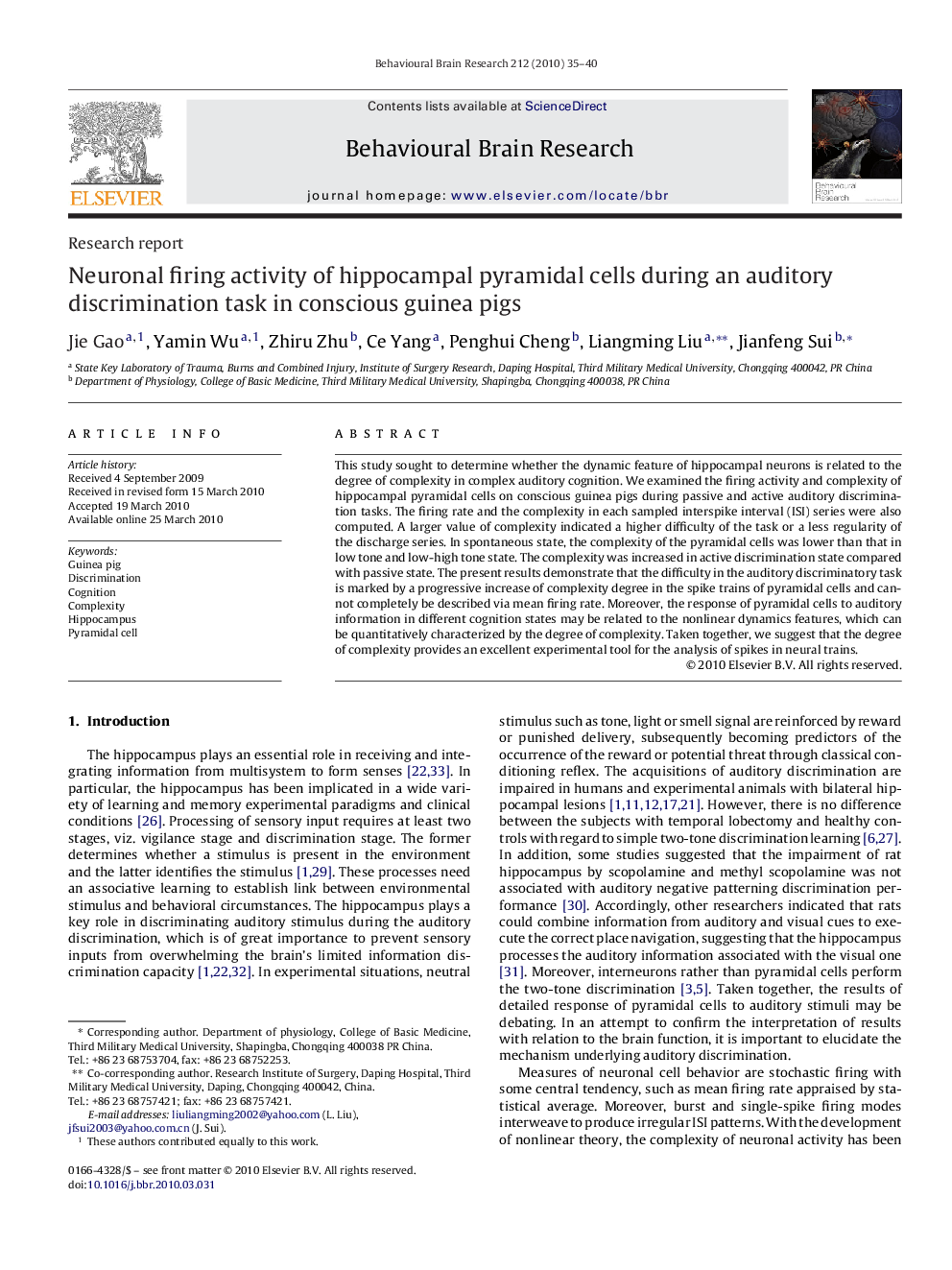| Article ID | Journal | Published Year | Pages | File Type |
|---|---|---|---|---|
| 4314201 | Behavioural Brain Research | 2010 | 6 Pages |
This study sought to determine whether the dynamic feature of hippocampal neurons is related to the degree of complexity in complex auditory cognition. We examined the firing activity and complexity of hippocampal pyramidal cells on conscious guinea pigs during passive and active auditory discrimination tasks. The firing rate and the complexity in each sampled interspike interval (ISI) series were also computed. A larger value of complexity indicated a higher difficulty of the task or a less regularity of the discharge series. In spontaneous state, the complexity of the pyramidal cells was lower than that in low tone and low-high tone state. The complexity was increased in active discrimination state compared with passive state. The present results demonstrate that the difficulty in the auditory discriminatory task is marked by a progressive increase of complexity degree in the spike trains of pyramidal cells and cannot completely be described via mean firing rate. Moreover, the response of pyramidal cells to auditory information in different cognition states may be related to the nonlinear dynamics features, which can be quantitatively characterized by the degree of complexity. Taken together, we suggest that the degree of complexity provides an excellent experimental tool for the analysis of spikes in neural trains.
